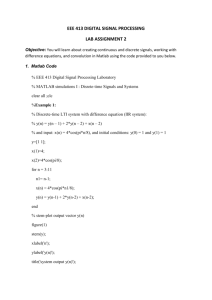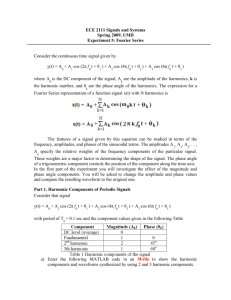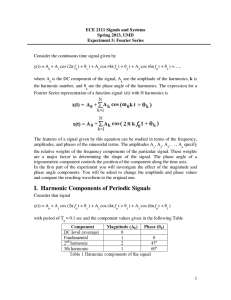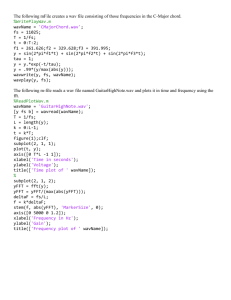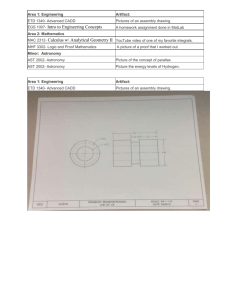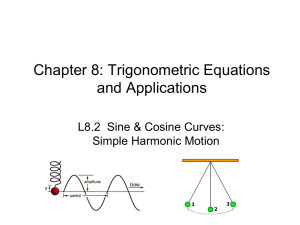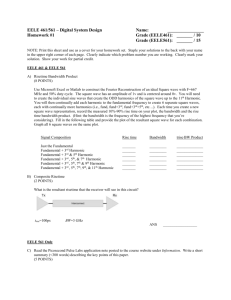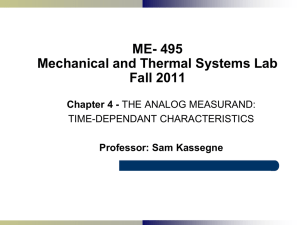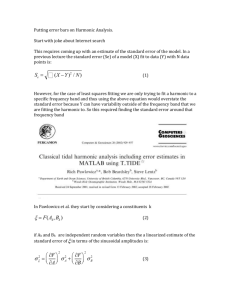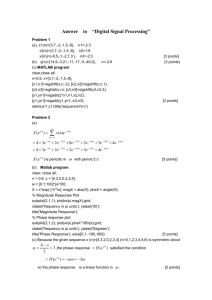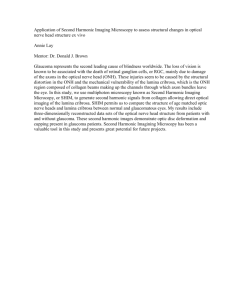Fourier Series - University of Minnesota Duluth
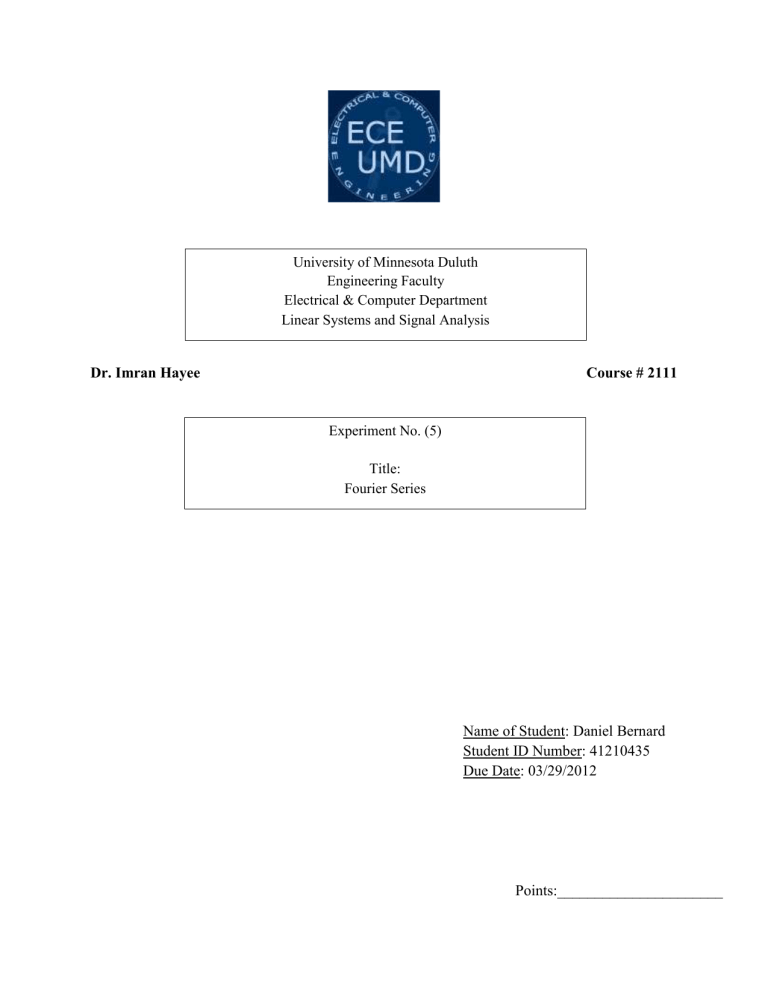
Dr. Imran Hayee
University of Minnesota Duluth
Engineering Faculty
Electrical & Computer Department
Linear Systems and Signal Analysis
Experiment No. (5)
Title:
Fourier Series
Course # 2111
Name of Student: Daniel Bernard
Student ID Number: 41210435
Due Date: 03/29/2012
Points:______________________
1.
Statement of the Problem
This lab covers the plotting of harmonic frequencies, and their sum to plot a final signal. For example, a triangular wave can be synthesized from sine waves. From this lab, understand how the Fourier Series works to sum components of a signal, and how more summed frequencies create a more accurate signal, but increase it’s bandwidth.
2.
Results
I.
Harmonic Components of Periodic Signals a.
Show harmonic components and waveforms synthesized by using 2 and 3 harmonics b.
Changing the magnitude of the harmonics
𝐴
2
= 1.6, 1.2, 1 f0=10; % Define the frequency of the signal t = 0:0.001:1; harm1 = cos(2*pi*10*t); harm2 = 2*cos(2*pi*20*t+45/180*pi); % This line edited signa2 = harm1 + harm2; harm3 = 1*cos(2*pi*30*t+60/180*pi); signa3 = signa2 + harm3 harm4 = 1.5*cos(2*pi*40*t+120/180*pi) signa4 = signa3 + harm4 figure(1) subplot(3,3,1); plot(t,harm1);title('Fundamental');xlabel('Time(t)');ylabel('Magnitude') subplot(3,3,2); plot(t,harm2);title('Second
Harmonic');xlabel('Time(t)');ylabel('Magnitude') subplot(3,3,3); plot(t,harm3);title('Third
Harmonic');xlabel('Time(t)');ylabel('Magnitude') subplot(3,3,4); plot(t,signa2);title('Signal 2 = Fundamental + Second
Harmonic');xlabel('Time(t)');ylabel('Magnitude') subplot(3,3,5); plot(t,signa3);title('Signal 3 = Signal 2 + Third
Harmonic');xlabel('Time(t)');ylabel('Magnitude') subplot(3,3,6); plot(t,harm4);title('Fourth
Harmonic');xlabel('Time(t)');ylabel('Magnitude') subplot(3,3,7); plot(t,signa4);title('Signal 4 = Signal 3 + Fourth
Harmonic');xlabel('Time(t)');ylabel('Magnitude')
Maximum amplitude is decreased when 𝐴
2
is decreased. It also lowers the amplitude of the second peak in the final Signal 3.
c.
Changing the phase of the harmonics 𝜃
2
= 35°, 25°, 10°
Decreasing 𝜃
2
shifted the second harmonic to the right, so it merged with the third harmonic in the final Signal
3.
d.
Adding an harmonic to the signal y(t)
The fourth harmonic adds an additional peak to the final Signal 4.
II.
Magnitude Spectra and the partial Fourier Series a.
Magnitude Spectrum of a Square Wave
b1 b2 b3 b4
1.2732
0
0.4244
0 b9 b10 b11 b12
0.1415
0
0.1157
0 b5 b6
0.2546
0 b13 b14
0.0979
0 b7 0.1819 b15 0.0849 b8 0
The system prompts the user for input after displaying the text recorded in ‘b’ and waits until the user presses enter. At that point the data the user entered is stored in the variable ‘a’. b.
Magnitude Spectrum of a Triangular Wave a1 -0.8106 a2 0 a3 -0.0901 a4 0 a5 -0.0324 a6 0 a7 -0.0165 a8 0 a9 -0.01 a10 0 a11 -0.0067 a12 0 a13 -0.0048 a14 0 a15 -0.0036
3.
Exercises
Trigonometric: third function Complex Exponential: second Compact: first function function
4.
Conclusion
This lab gave an understanding of how the adjustment of the phase and amplitude of a harmonic frequency could adjust the overall signal being output. In addition, it showed how increasing the number of harmonic frequencies summed to create a signal could also increase the accuracy of that signal.
